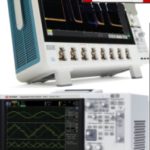Audio engineers in the 1970s became aware that many of the traditional distortion mitigating methods were unsatisfactory. In this context, dbx and Dolby noise reduction systems emerged. Dbx Type I and Type II vastly improved audio fidelity in analog tape reproduction. Dbx-TV is another system component that provides stereo sound for TV systems in the United States.
Of course, the original dbx and Dolby noise reduction techniques both rely on analog electronics. Noise reduction strategies are still used in audio today, but they are digital predecessors to the early analog techniques. Nevertheless, it is useful to examine these early signal processing techniques.
The first dbx Type I and Type II is based on a concept known as linear decibel companding. It is a two-step procedure. As part of the recording process, the signal is first compressed. On playback, it is expanded. In 1982,

The Type II decoder consisted of a single integrated circuit, and it was built into a limited number of Panasonic cassette players and Sanyo car stereos. Dbx also offered its PPA-1 Silencer for use in the Sony Walkman.
A compander basically compresses or expands the dynamic range of an analog input signal. One implementation of it employs a logarithmic amplifier followed by a variable-gain linear amplifier and an exponential amplifier. This configuration has the property that its output voltage is proportional to the input voltage raised to an adjustable power.
Companders are designed to operate according to relatively simple dynamic range compressor functions, the two most widely used being the A-law and μ-law functions. For example, in digital telephony, companders compress the input to an ADC and then expand it after a DAC. This technique is equivalent to using a non-linear ADC that implements A-law or μ-law companding. The point of the exercise is to get better signal-to-noise ratios (SNR) using fewer digital bits. For example, a linearly encoded 16-bit PCM signal can be converted to an 8-bit WAV or AU file while maintaining a good SNR by compressing before the transition to 8-bits and expanding after conversion back to 16-bits.
One reason noise reduction became necessary in high-quality audio is because magnetic tape used for audio recording has tape hiss. The hiss tends to compromise the rendering of low-volume, high-frequency musical tones. Tape hiss is essentially the noise floor in sound reproduction on magnetic tape. It is a function of the magnetized particle size, tape width and tape speed in inches-per-second. Small tape players are at a distinct disadvantage because of the narrow tape width and slow speed.
To mitigate tape hiss, chrome and other metal tapes were introduced. They used smaller magnetized particles, successfully pushing the noise floor, with audible hiss, to higher frequencies. But there were physical limits to reducing particle size. Dbx and Dolby endeavored to reduce noise using purely electronic designs.
Dbx compresses the source (in the recording studio) so it has less dynamic range, then decompresses it so tape hiss is obscured. Dynamic compression, as used by dbx, mutes loud sounds and amplifies soft ones. This reduces signal amplitude. The dynamic range is then expanded by the same amount, softening the low-volume sounds and re-emphasizing the high-volume sound. It is even possible to create more dynamic range that existed in the original live performance.
You might wonder how one goes about compressing a signal without losing desired information. The compression process starts by sending copies of the input signal down two different paths. One copy goes to a variable-gain amplifier. The other goes to a circuit that measures the signal level. The size of the signal is used to control the amount of gain in the variable-gain amplifier. This approach is known as a feed-forward design and is used in most modern compressors. Earlier designs measured the signal level after the amplifier and used the output to adjust the gain in a conventional feedback arrangement.
There are several parameters in the compression circuitry that are adjusted to optimize results. One is the threshold at which a compressor reduces the level of an audio signal. A lower threshold allows compression of a larger portion of the signal. A signal level below the threshold receives no compression. Thus a higher threshold results in less compression. The timing of the threshold can also be adjusted subject to attack and release settings. When the signal level exceeds the threshold, compressor operation is delayed according to the attack setting. Similarly, the release setting determines how long compression remains on after the point at which the input signal has fallen below the threshold for compression.
The amount of gain reduction is determined by a ratio. A ratio of 4:1 means that if the input level is 4 dB over the threshold, compression reduces the output signal level to 1 dB over the threshold. Thus the gain and output level has been reduced by 3 dB. Put another way, any input signal level over the threshold will be amplified at a level only 25% (i.e. 1 over 4) as much as signals below the threshold. The highest ratio is ∞ :1 and is often known as limiting. It denotes that any signal above the threshold is brought down to the threshold level once the attack time has expired.
Today there are digital versions of analog compression techniques that get applied in mixing consoles, digital audio workstations, and so forth.

The Dolby Noise Reduction System is actually a succession of increasingly robust innovations, first introduced for use in audio recording tape by Dolby Laboratories is 1965. At that time, Dolby A emerged as a high-end professional broadband noise reduction system for recording studios. A more general-use product for the emerging consumer market appeared in 1968. It boosted fidelity on cassette tapes, which previously had been compromised by noisy tape size and slow speed. Dolby B is ubiquitous in today’s players and recorders.
Dolby A and SR are used exclusively in professional equipment, while B, C and S are used in consumer analog tape systems. Like dbx, all Dolby models with the exception of Dolby HX work by compressing the dynamic range of sound during recording, then re-expanding it during playback.
Dolby noise reduction uses techniques analogous to those used for dynamic compression. It employs dynamic pre-emphasis during recording and dynamic de-emphasis during playback to improve the SNR. The effect is to boost the volume of soft sounds during recording, then reduce the volume by the same amount on playback to get the original volume levels. Reducing the volume on playback reduces the noise level by the same amount.
Dolby noise reduction also takes into account that tape noise arises largely at frequencies above 1 kHz. Thus it only applies companding to certain frequencies. The differences in the various Dolby products largely concern the precise set of frequencies they use and the amount of modification of the original signal volume applied to each of the frequency bands.
Within each band, the amount of pre-emphasis applied depends on the original signal volume. For instance, in Dolby B, a low-level signal will be boosted by 10 dB, while signals at the “Dolby Level”, +3 VU, receive no signal modification at all. Between the two limits, a varying level of pre-emphasis is applied. On playback, the opposite process is applied (de-emphasis), based on the relative signal component above 1 kHz. Thus as this portion of the signal decreases in amplitude, the higher frequencies are progressively increasingly attenuated, which also reduces in level the constant background noise on the tape when and where it would be most noticeable.
Dolby HX was invented by an outside firm, Bang & Olufsen, which licensed it to Dolby Laboratories. Dolby HX addresses the non-linearity in magnetic tape caused by the hysteresis of the magnetic material. To overcome the resultant distortion, a high-frequency signal called bias is introduced into the recording. It has the effect of moving the signal into the linear region. High-frequencies as contributed by certain musical instruments add to the bias, causing magnetic saturation on the tape. Dolby HX compensates by reducing the bias at the high-frequency end, so higher amplitudes can mask the bias.
One might think the move away from magnetic tape to digital audio would have marked the end of Dolby as a major player in audio and video reproduction, but in actuality Dolby analog noise reduction has maintained its prominent position in high-end tape-based audio technology.
Of course, digital noise reduction methods are now in wide use. The general approach of most such methods is to analyze incoming sound in the frequency domain and apply rules that determine what happens to it during processing. For example, researchers have found that modulations relevant to speech span roughly from 0.1 to 40 Hz and that clean speech modulations show a range of amplitude fluctuations of approximately 30 to 50 dB. It turns out that speech has fewer modulations with more depth than does most noise. Thus an algorithm based on modulation spectra might not alter gain for modulation frequencies below 10 Hz but reduce gain by 6 to 8 dB for modulation-rich noises. One place where this kind of algorithm is in wide use is hearing aids.






Leave a Reply
You must be logged in to post a comment.